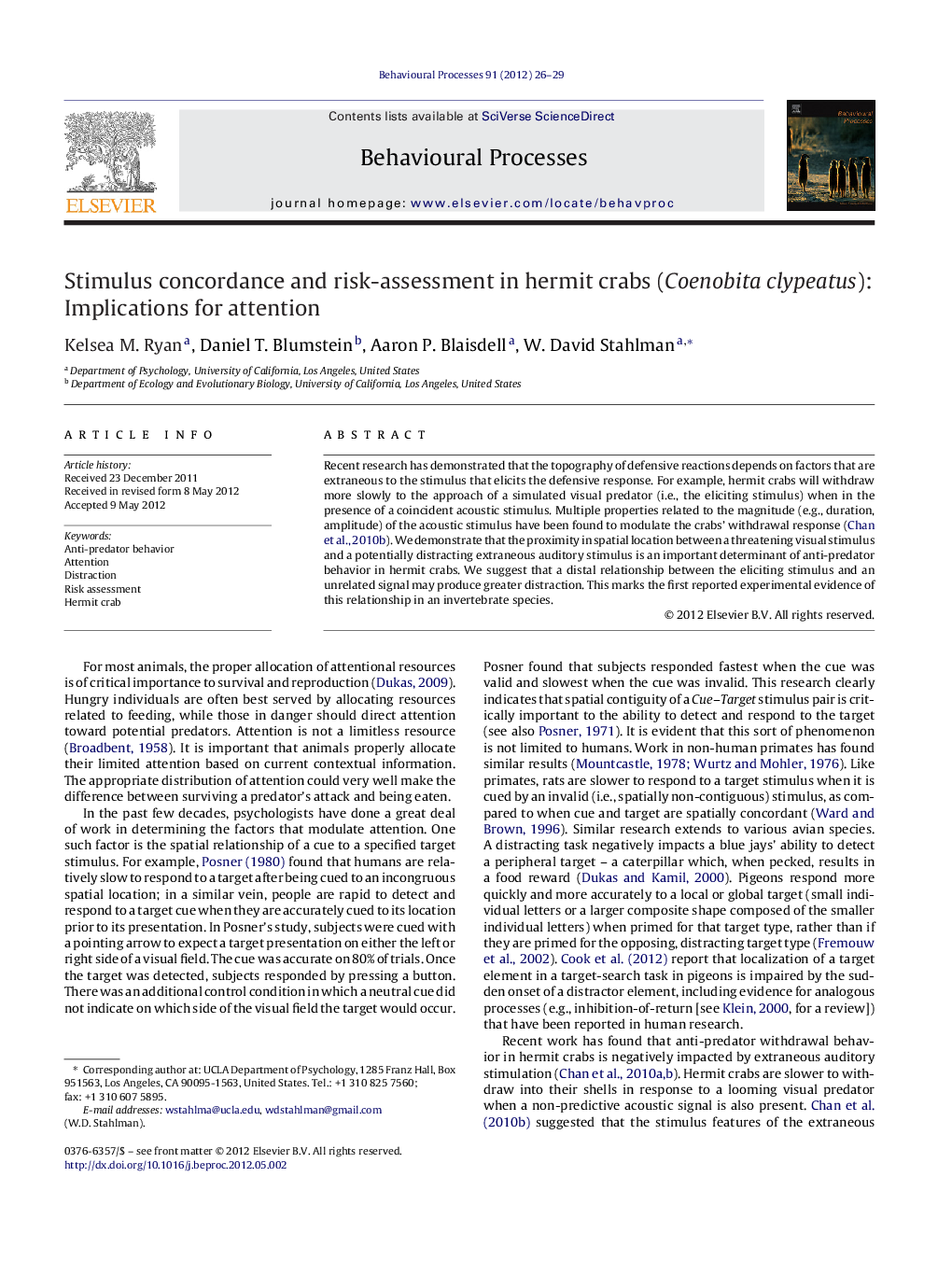| Article ID | Journal | Published Year | Pages | File Type |
|---|---|---|---|---|
| 2426924 | Behavioural Processes | 2012 | 4 Pages |
Recent research has demonstrated that the topography of defensive reactions depends on factors that are extraneous to the stimulus that elicits the defensive response. For example, hermit crabs will withdraw more slowly to the approach of a simulated visual predator (i.e., the eliciting stimulus) when in the presence of a coincident acoustic stimulus. Multiple properties related to the magnitude (e.g., duration, amplitude) of the acoustic stimulus have been found to modulate the crabs’ withdrawal response (Chan et al., 2010b). We demonstrate that the proximity in spatial location between a threatening visual stimulus and a potentially distracting extraneous auditory stimulus is an important determinant of anti-predator behavior in hermit crabs. We suggest that a distal relationship between the eliciting stimulus and an unrelated signal may produce greater distraction. This marks the first reported experimental evidence of this relationship in an invertebrate species.
► Greater concordance between acoustic stimulation and visual eliciting stimulation decreases anti-predator response latency. ► Hermit crabs exhibit more freezing behavior when acoustic and visual stimuli are spatially contiguous. ► Results suggest an analog for attention processes only previously demonstrated in vertebrate species.
